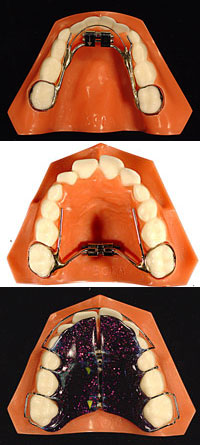By widening the upper jaw, the expander key creates additional space for the teeth to move into proper alignment, reducing the need for extractions and other invasive treatments. Another benefit of using an expander key is that it can help address a variety of orthodontic issues, including crowding, crossbites, and narrow dental arches.
 Patients may also notice improvements in their speech and ability to chew food more effectively. This can help to alleviate issues such as crowding or overlapping teeth, and improve the overall function of the bite. The effects of using an expander before treatment can be seen in the improved alignment of the teeth and the creation of additional space in the mouth.
Patients may also notice improvements in their speech and ability to chew food more effectively. This can help to alleviate issues such as crowding or overlapping teeth, and improve the overall function of the bite. The effects of using an expander before treatment can be seen in the improved alignment of the teeth and the creation of additional space in the mouth.
These appliances can be unsightly and can cause discomfort for the patient. Traditional methods of jaw expansion typically involve the use of bulky and uncomfortable appliances that are worn for an extended period of time. Invisalign offers a more discreet and comfortable alternative to traditional jaw expansion methods.
However, some individuals may have a small palate, which can have implications for their oral health. The palate is divided into two parts, the hard palate, which is the bony structure at the front of the mouth, and the soft palate, which is the muscular structure at the back of the mouth. The palate is an essential part of the oral cavity that plays a crucial role in various functions such as speech, swallowing, and taste sensation.
Here’s more info regarding headgear expander look into our webpage. Overall, the side effects of orthodontic expanders are relatively minor and can be managed with proper care and communication with your orthodontist. By being aware of the potential side effects and knowing how to address them, patients can ensure a successful and comfortable orthodontic treatment experience. It is important to follow your orthodontist’s instructions for wearing and caring for your expander to minimize the risk of side effects.
The restricted space in the mouth can put added pressure on the jaw joint, leading to TMJ disorder, while misaligned teeth can contribute to bruxism and increase the risk of tooth decay. Furthermore, individuals with a small palate may be at a higher risk of developing certain oral health problems such as temporomandibular joint disorder (TMJ), bruxism (teeth grinding), and even dental caries.
One of the most common issues associated with a small palate is crowded or misaligned teeth. When the palate is too small, there may not be enough space for all the teeth to erupt properly, leading to crowding or misalignment of the teeth. This can not only affect the appearance of the smile but also make it difficult to maintain proper oral hygiene, increasing the risk of tooth decay and gum disease.
Before the expander is placed, a thorough examination of the patient’s mouth is conducted to determine the best course of treatment. Once it is determined that an expander is necessary, the device is custom-made to fit the patient’s mouth and attached to the upper molars using bands or cement. X-rays may be taken to assess the alignment of the teeth and the size of the jaw.
In conclusion, the use of an expander before and after treatment can help to correct issues with tooth alignment and create a more harmonious bite. By working closely with an orthodontist and following their recommendations, patients can achieve a beautiful and healthy smile. While the process may involve some discomfort and adjustment, the long-term benefits of using an expander can be significant.
This innovative method offers a discreet, comfortable, and convenient solution for individuals seeking to expand their jaw and achieve a straighter, healthier smile. With its many benefits, it is no wonder that more and more patients are choosing Invisalign as their preferred method of orthodontic treatment. Overall, Invisalign jaw expansion is a revolutionary approach to correcting dental issues.
Drinking plenty of water and practicing good oral hygiene can help manage this side effect. This is a normal response to having a foreign object in the mouth, and it usually resolves on its own as the patient adjusts to the expander. In some cases, patients may experience excessive saliva production while wearing an orthodontic expander.
Regular check-ups with the orthodontist are also recommended to monitor the progress of treatment and make any necessary adjustments. This helps to prevent the teeth from shifting back to their original position and ensures that the benefits of using an expander are long-lasting. After the expander has been removed, patients may need to wear a retainer or other orthodontic appliance to maintain the results of treatment.
While these devices are highly effective in achieving the desired results, they can also have side effects that patients should be aware of. In this article, we will discuss the potential side effects of orthodontic expanders and how they can be managed. Orthodontic expanders, also known as palatal expanders, are commonly used in orthodontic treatment to correct issues such as crowding, crossbites, and narrow arches.
